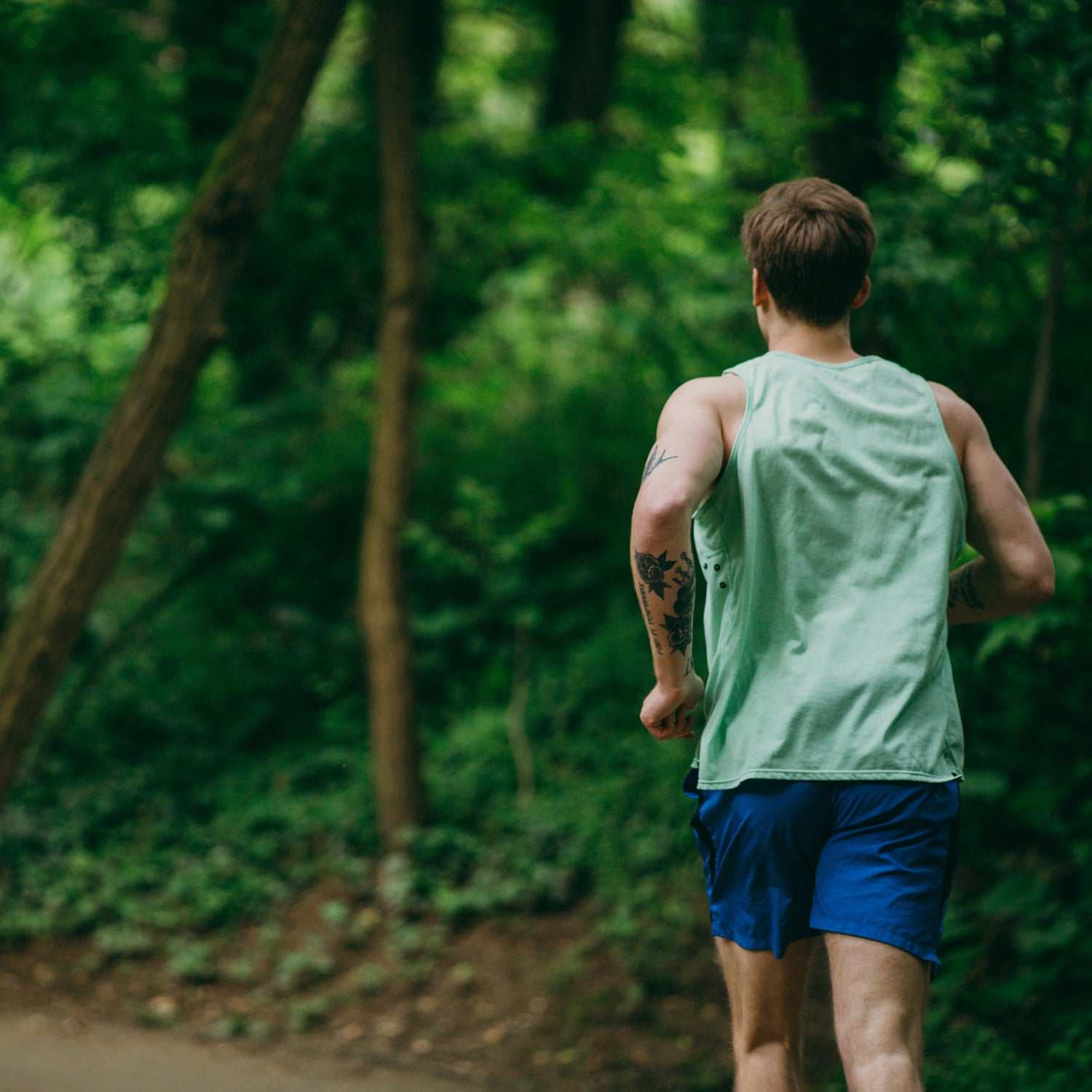A friend of mine who ran for the great University of Arkansas track and cross-country dynasty of the 1990s once told me a story about training paces. When eager freshmen showed up each fall for their first workout with the team—five by a mile, say—they’d sidle over to the upperclassmen and ask nervously, “So, um, how fast are we supposed to run these miles?” And the seniors would cock an eyebrow and reply, “I don’t know, how fast can you run them?”
That approach works pretty well (within limits) for hard workouts. But it fails for easy runs, which might make up 80 percent of your training and by definition are done more slowly than you’re capable of. As a result, there are some radically different schools of thought about exactly how easy “easy” should be, from super relaxed to the semi-brisk that’s currently popular. And there’s a more nihilistic school of thought—one that, on reflection, I’ve subscribed to for most of my running career—which assumes that easy running pace doesn’t really matter as long as you’re not pushing the extremes in either direction.
Easy Run Pace, In Reality
I’ve been contemplating this topic because of an , by Jessica Selinger of Queen’s University in Canada, along with colleagues from Stanford and Seattle Pacific universities. Instead of asking how fast people should run on easy days, it asks how fast they do run. The researchers analyzed running data from 4,645 runners who used a now-discontinued wearable tracker called . The subjects (possibly including me—I tried Lumo out briefly) had an average age of 44 and an average BMI of 24.4, and 38 percent were female. They recorded a total of 37,000 runs.
The most notable result from the study was that, for individual runners, running pace did not depend on the distance of the run. If someone went out for a two-mile run, they generally ran at the same pace that they would for a six-mile run. This is, of course, not what you’d expect if people were racing, or running hard workouts at the University of Arkansas. It’s also not what you’d expect even with the more subtle goal of training easily enough to allow your body to recover between hard workouts. In that case, you’d still expect shorter runs to be a bit quicker. (They did see a marginal slowdown starting with runs of at least seven miles, where fatigue probably starts to kick in more insistently.)
The choice of easy running pace, Selinger argues, is dictated by energetic efficiency. Each of us has an energetically optimal running pace that minimizes the number of calories we burn to cover a given distance (i.e. what scientists call the cost of transport). You can calculate this optimal pace in a lab by running at a bunch of different paces while measuring energy expenditure, then determining which pace minimized the cost of transport. Comparing the Lumo data to previous lab data from age-, sex- and BMI-matched subjects, Selinger found that people seemed to naturally settle into their most efficient pace, regardless of how far they planned to run.
What Does Easy Run Pace Really Mean?
This result caught my attention because I’ve long been fascinated by the wide range of easy paces among runners of similar ability. I’ve always tended to run quite slowly on my easy days compared to the people I train with and race against. It’s not because I’m incapable of running faster: in group runs, I keep up without any trouble. But doing so always feels subtly effortful, like speaking a fluent but not native second language. In contrast, some of my friends feel equally uncomfortable running as slowly as I prefer to. They �������’t deliberately running fast because they believe it’s necessary for their training; they’re just more comfortable at a quicker pace.
As an aside, it’s worth highlighting how odd the previous statement is. Running faster always burns more energy in a given amount of time than running slower, which means that it’s also associated with a higher perception of effort. But (as have also found) when you ask someone to run, they don’t automatically choose the easiest possible pace, which would be a painfully slow shuffle. Instead, they pick the most efficient pace, which minimizes energy spent to cover a given distance. My fast-easy-run friends are choosing a pace that’s both objectively and subjectively harder, but nonetheless somehow feels right to them.
Selinger’s results are group aggregates: the average pace that people in her Lumo dataset chose to run at corresponds to the average energy-optimal pace for people with that age, sex, and BMI. Is it possible that individual choices of running pace are also dictated by energy efficiency—that is, that my personal sweet spot occurs at a slower pace than that of my training partners?
When I asked Selinger that question, she noted that she does see evidence for this effect in data she has collected on walking speed. While the data is noisy, in general individuals whose most efficient cost of transport occurs at fast walking speeds tend to self-select fast walking speeds. Her guess is that the same would hold true in running: those who choose slower easy runs are likely doing so because they’re most efficient at a lower pace, she says.
How to Optimize Your Running Pace
The next obvious question is what determines your optimal pace, and how to change it. “This is another great question,” Selinger told me—which is the scientific code for “no one really knows.” There are certainly factors that affect how efficiently you run, like . But those factors might simply make you more efficient at all different speeds, without changing which speed is the most efficient. Factors like leg length, stride rate, muscle mass, and tendon springiness might all affect optimal speed—but “in complex and often interrelated ways,” Selinger says.
That means there’s no simple exercise that will magically increase my optimal running speed. And even if there were, it’s not clear that it would be useful anyway. When you race, you’re running far above your most efficient speed, because the goal of a race is to go as fast as possible, not to be as efficient as possible. Now that we’re no longer chasing antelopes across the savannah, minimizing cost of transport seems less urgent—unless it turns out that (a) the pace of your easy runs really does make a big difference to your racing performance, and (b) our preference for running at the energy-optimal pace is strong enough to dictate or at least influence easy-run pace. More research is required to nail down both those hypotheses.
Until then, count me as an enthusiast about the idea of preferred running paces that �������’t directly dictated by fitness. As I slide rapidly through my 40s, I’ve certainly noticed my default pace slowing. Selinger didn’t have enough lab data to explore how age affects optimal speed, but it’s not hard to guess what the results would be. I still run my easy days more slowly than you’d expect based on my race results, and it’s not because I have strong beliefs about the physiological benefits of one pace over another. It’s because it feels right—and I’d prefer to think that feeling represents a deep evolutionary drive for efficiency, rather than simple laziness.
For more Sweat Science, join me on and , sign up for the , and check out my book .


